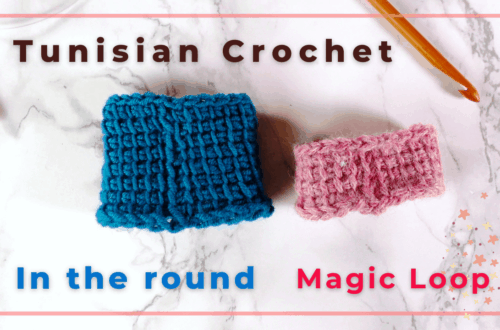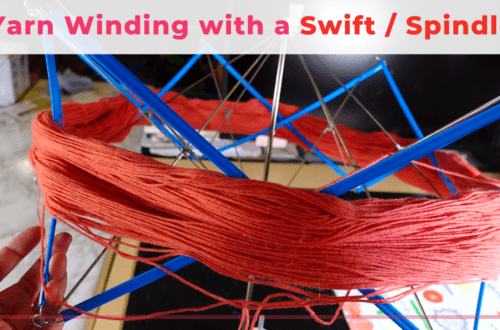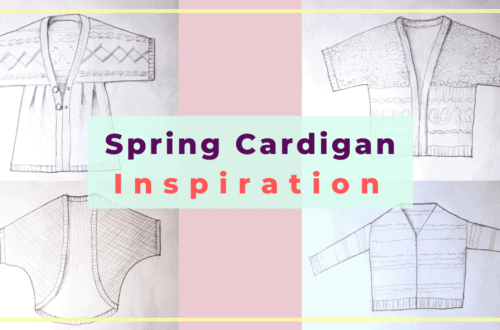
Tunisian crochet simple stitch increase, decrease, cast on, and bind off
Tunisian crochet is like a hybrid of traditional crochet and knitting. It works up faster than knitting and produces a dense and sturdy fabric. Each stitch is almost a square instead of a wide rectangle like in the knitted fabric. It can also be combined with knitting and crochet to make unique designs.

Because of the different tools you have to get for Tunisian crochet, many people shy away from trying Tunisian crochet. It is actually very easy to learn, and the possibilities are endless.
Watch the video below for beginner-friendly Tunisian crochet simple stitch cast on, cast off, increase, and decrease. Or, read on for the picture tutorial.
Watch the Tunisian crochet tutorial for beginners – simple stitch cast on, bind off, increase, and decrease
Tunisian Crochet hooks
There are several types of Tunisian crochet hooks. The most common one is similar to the traditional crochet hook but just longer. You can actually use a traditional crochet hook for Tunisian crochet if your project is small.
In Tunisian crochet, we usually work the front side only and hold all stitches on the hook. So a longer needle is required for a bigger project.
We also need a bigger size hook compared to traditional crochet because the Tunisian crochet produces a dense fabric. A looser tension will prevent curling.

Some Tunisian crochet hooks come with a long cable so you can crochet bigger projects such as a blanket. Some hooks come with a stop at one end, and others have another needle on the other end. The double-end hook can be handy in some projects, but most patterns don’t call for a double-ended crochet hook.

There are also interchangeable hooks similar to circular knitting needles. You can mix and match different size crochet hooks and different lengths of cables. This creates the most flexibility. The drawback is the connection can be loose if not tightened enough.
Popular manufacturers of interchangeable Tunisian hooks include Knitter’s Pride, Denise, Clover, Chiao Goo, and Addi. Each one has pros and cons. It really depends on your personal preference and the project patterns.
The cast on and foundation row for Tunisian crochet
Chain stitches
Same as the traditional crochet, we can start with chain stitches. Tunisian crochet does not need an extra stitch for the height of the first row. So if I want 15 stitches, I simply crochet 15 chains, and not 16.
The foundation row (forward pass row)
The first row after the chain stitches is the foundation row. The foundation row is the same in all Tunisian crochet no matter what stitch you use.
For Tunisian crochet, we typically pick up “the bumps” (or the bars) on the backside of the chains, because this will create a nice chain finish at the beginning edge.
Turn the chain stitches to see the bumps on the backside. Skip the first bump, and poke the hook through the second bumps, grab the yarn and pull through. One stitch is done.

Leave all stitches on the hook instead of pulling them through. This is the characteristic of Tunisian crochet. This is called the forward passing row. Later we will crochet the returning row. Both rows are done from the front of the project.
Keep picking up yarn through the bumps and leave them on the hook, until the last stitch.
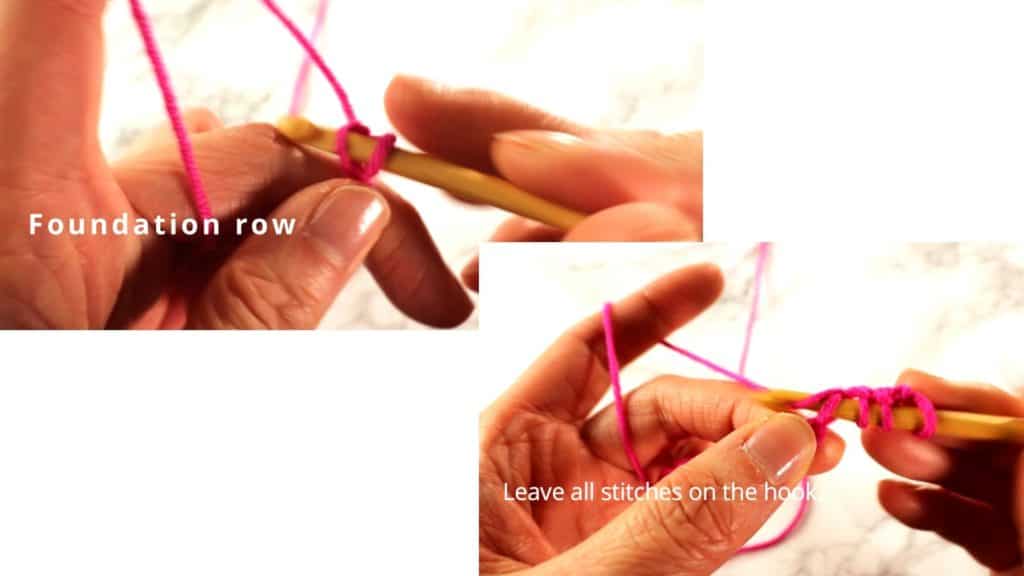
Returning Row (reverse row)
First, do a “yarn over” (wrap the yarn around the hook), then pull the yarn through the first stitch.
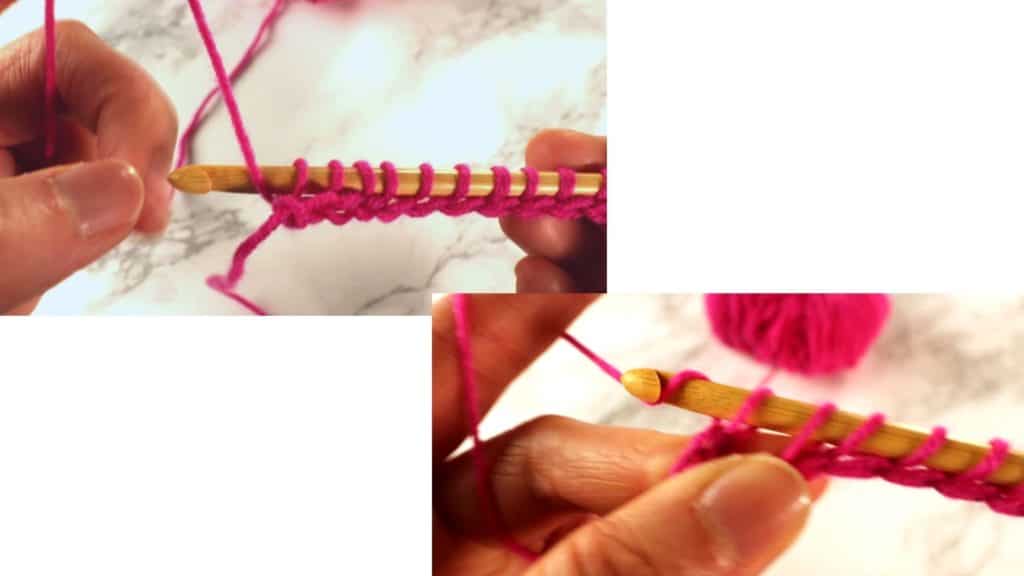
After the first stitch, we do a yarn over, and pull through 2 stitches.
Continue repeating “Yarn over, pull the yarn through 2 stitches” until the end.
We just finished the foundation row. The hook and yarn are back to the right side.
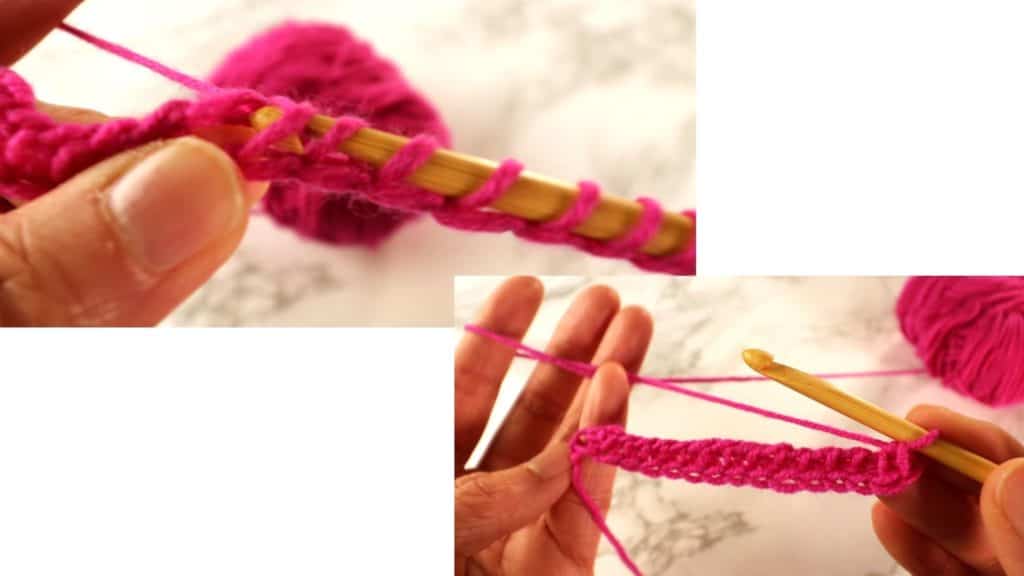
Tunisian Simple Stitch (TSS)
Now we will start the Tunisian simple stitch (TSS).
Forwarding row
Similar to the foundation row, we pick up the vertical bars. These are actually the front legs of the V shape stitches.
Skip the first vertical bar at the right edge, and poke the hook through the second bar (without going all the way to the backside of the fabric), grab the yarn, and pull through. One stitch is crocheted.
Continue picking up every vertical bar until the last stitch.


The last stitch
For the last stitch, instead of picking the yarn through one bar, we are going to pick up both bars of the V stitch. We do the same on the last stitch of all forwarding rows.
Turn the work to the side and you will see both legs of the V. Work those 2 vertical bars as one. This creates a nice finish on the side of the fabric.
The returning pass is the same as in the foundation row: Yarn over, pull the yarn through one stitch, *(yarn over, pull the yarn through 2 stitches), Keep repeating *( ) until the end.

Continue working on the forwarding pass and returning pass until the length you like. See below pictures for the front and backside of the Simple Tunisian stitches.
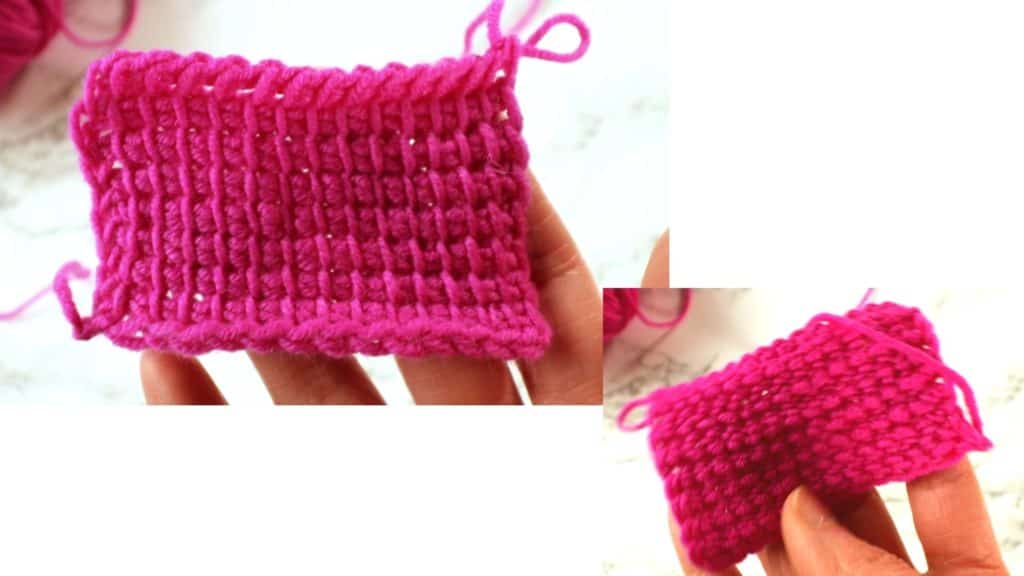
Increase a stitch in the Tunisian crochet
There are many methods to increase and decrease. An easy increasing method is to crochet a “Yarn Over” (wrap the yarn around the hook). This creates an extra stitch. Then continue crochet as usual.
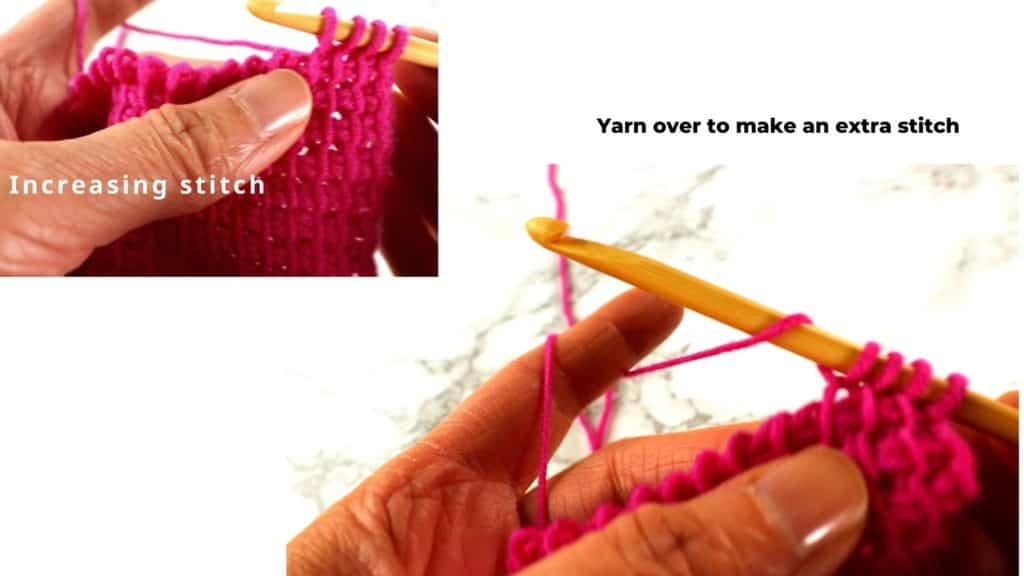
The “yarn over” increase creates a slant loop on the hook. There are some bigger openings around the increased stitches but will be less noticeable after the returning pass.
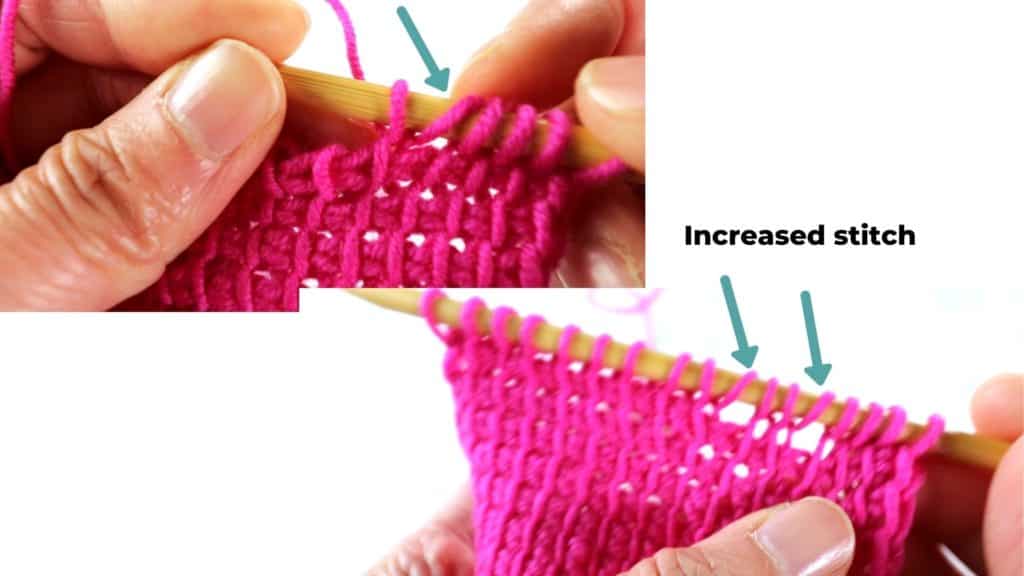
Work the returning pass the same way as usual.
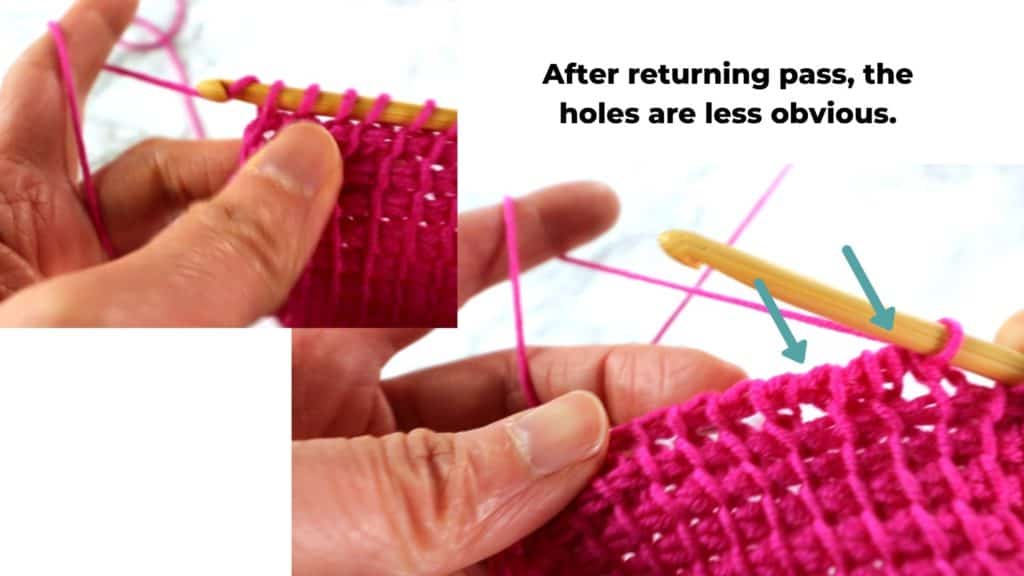
The decrease in the Tunisian crochet
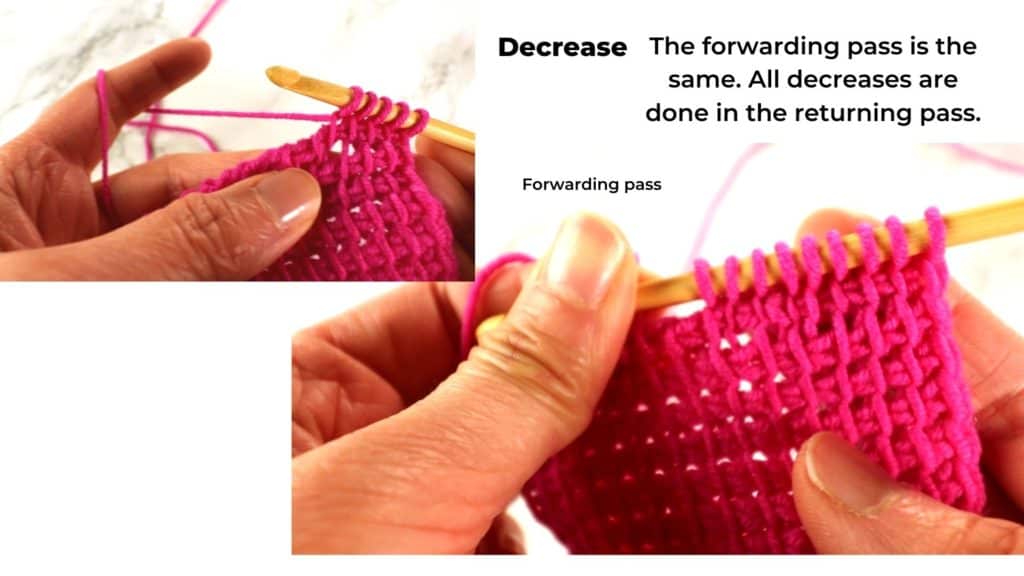
An easy way to decrease a stitch is from the returning pass. Instead of pull through 2 stitches, we can pull through 3 stitches to have 1 stitch decreased.

In the next row (forwarding row), we pick up yarn through the decreased stitch. It looks like an upside-down V. We treat these 2 vertical bars as one.

Binding off in Tunisian crochet
The last row always has holes in between stitches, so we will need a bind-off row to give a nice finish.

To bind off, we can do “slip stitches” just like in the traditional crochet.
Pick up the vertical bar, pull the yarn through. Instead of leaving the stitch on the hook, we pull through the yarn again until there is only one stitch on the hook.
Continue picking up the stitch and pull the yarn through. There is always one stitch only on the hook.

For the last stitch, pick up both legs of the V (turn to the side to see both vertical bars) and pull the yarn through. Cut the yarn and pull tight. Now we are done with binding off.
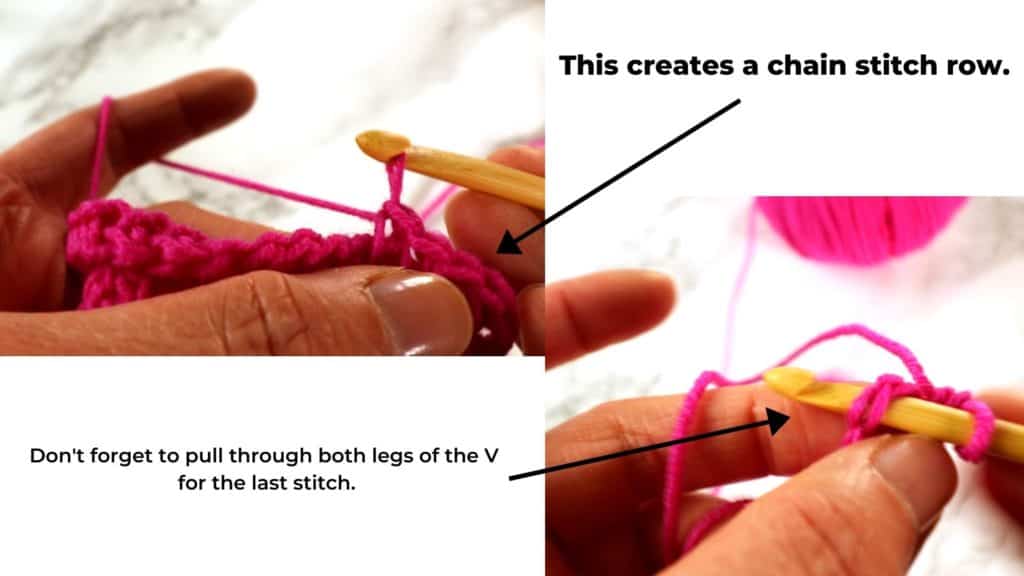
Below is the finished picture. You can see the increased and decreased stitches.

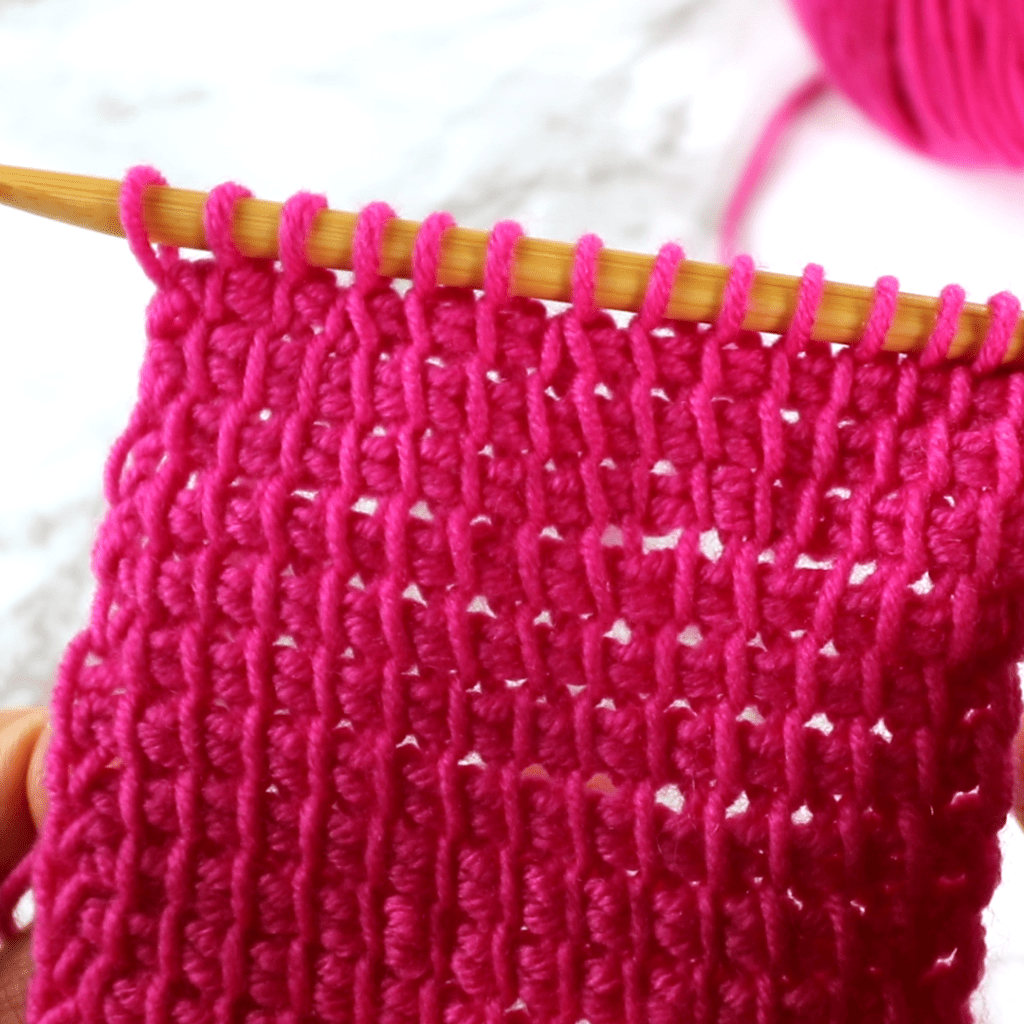
In the future, we can try different ways of Tunisian crochet in the round with different hooks, as well as color knitting with Tunisian crochet.
Tunisian crochet is great for home accessories such as a pillow, blanket, dishcloth, or bag. It will be fun to experiment and design.
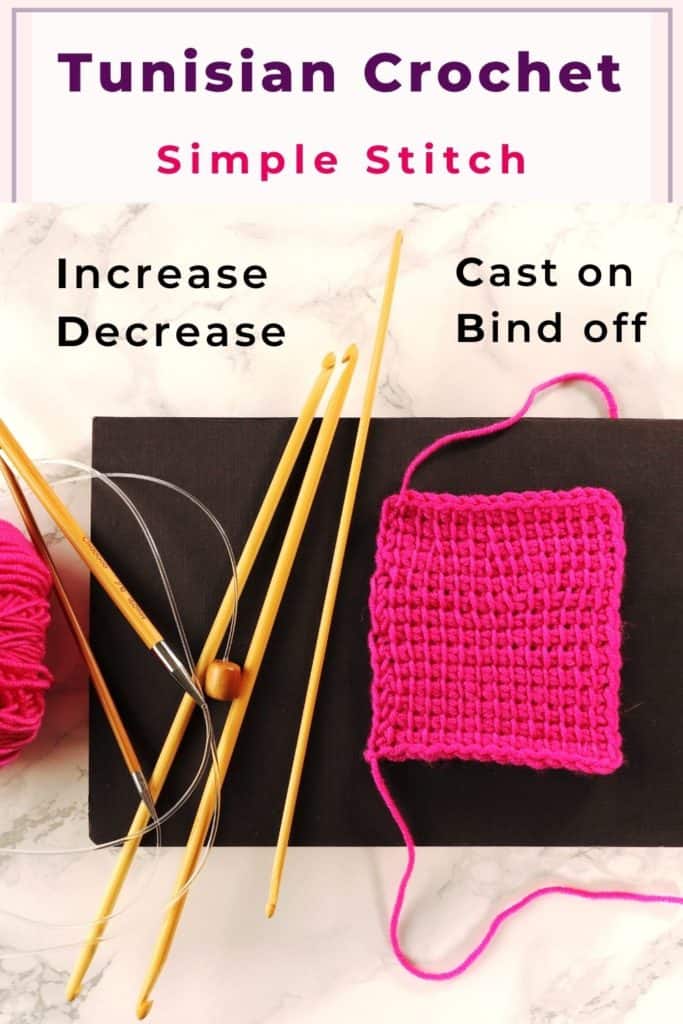
Tunisian crochet simple stitch cast on, bind off, increase, and decrease
Featured Posts
- How to machine knit a heart shape on an LK150

- Machine knitting a loop stitch for big texture

- Machine knitting a corner-to-corner, diagonal dishcloth
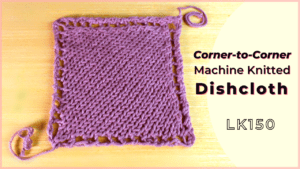
- Machine knitting a buttonhole band on an LK150

- Tuck stitch blanket on an LK150 – Part 1

- No curl edge with seed, garter, ribbing, or cable stitches

- Full-fashioned decrease, Garter Bar increases or decreases in the middle of a row

- How to machine knit a Chevron Lace Hem

- Machine knitting increases – the full-fashioned increase and double e-wrap

- Picot hem with a scalloped edge and eyelets on an LK150 knitting machine
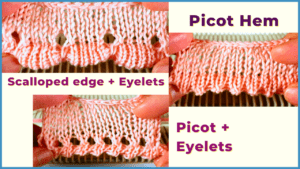
- The loop through loop bind-off and the sewing bind-off
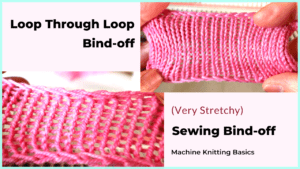
- The latch tool bind-off and around the gate peg cast-off

- Transfer tool cast off and variations- Simple, No hole, and Even-tension

- Double e-wrap, latch tool, and crochet hook cast on
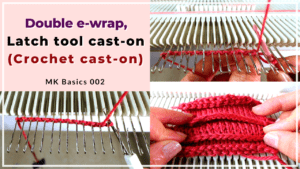
- Machine Knitting basics – Cast on with waste yarn, ravel cord, and e-wrap




